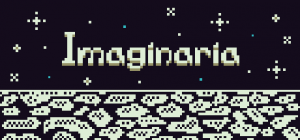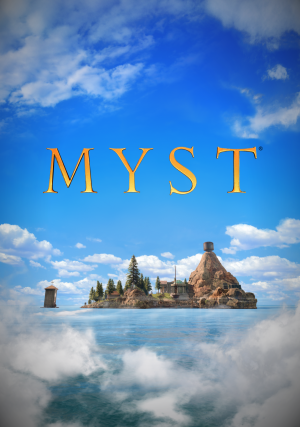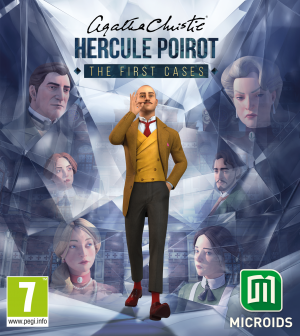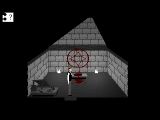Review for Imaginaria

The Antarctic has always been a fascination of mine. The only continent on the planet where humans had never established any permanent settlements until recently, it is a massive, largely untouched landscape filled with natural wonders. Under the Antarctic Treaty, countries may set up research posts, but cannot claim the land as their own, nor use it for military purposes. Thus, in spite of the dangerous conditions, scientists and explorers from all over the world come together, cooperating towards a common goal, depending on one another for survival on the mysterious frozen continent.
Imaginaria is the semi-fictionalized account of a young person taking up a post as a tech on an Antarctic base. The game draws from the first-hand experience of one of Orbis Tertius Games’ co-founders, leading players through a routine safety check of the small camp. It’s a fascinating snapshot of life below zero, chronicling the loneliness and mundanity of living in such an isolated place, while also portraying the beauty of the strange land. It’s just a snapshot – a short story at most, with a decidedly minimalist aesthetic. Yet in its brief runtime, the narrative effectively communicates a genuine slice of a life most of us will never know.
The word “Imaginaria,” as the nameless protagonist states in the game’s opening, stems from a Latin term representing both the night watcher and the act of night watch. You play as just such a night watchperson as you prepare for your titular duties one night on a remote scientific outpost. Several buildings must be checked to ensure they are not on fire – a real concern in Antarctica, where any loss can be catastrophic in such an isolated place. It might sound banal, but it’s a clever and effective means of showing players what life is like on the base, with your character’s comments conveying information about each building as you conduct your patrol.
Presented in a slideshow format, the game can be controlled entirely by the mouse, clicking about the environments and through dialogue, though the space bar can advance conversations as well. You begin in the protagonist’s current dwelling, a small domed fibreglass shelter. Here you pick up the equipment necessary for outside travel (boots, jacket, etc.), getting a short synopsis of why each item is important. You’ll also get plenty of side details not essential to your Imaginaria duties, like why so many of the windows have cardboard overtop of them.
There are five buildings you need to check on your rounds, though there are over twelve to visit in total, including scientific laboratories, housing structures, and storerooms, just to name a few. All five mandatory sites are listed in the Main Building’s logbook, though until you know where said places are, you’ll be exploring every available avenue anyway. You can search them in any order you like, but certain areas are locked off until you obtain important items, like a key to operate the snowmobile needed to reach a handful of remote locations. The patrol is wholly unremarkable, with none of the buildings being on fire (sorry for the spoiler). Nor are there any shady secret experiments going on down here, or extraterrestrial contaminations to discover. Instead the game becomes more of an interactive tour, allowing you to click on different objects in each location as the protagonist shares anecdotes about them.
You have the opportunity to meet several other characters on your beat, each offering more insight into the outpost’s social structure. A friendly scientist in the lab next door to your dwelling, for example, asks you raid the kitchen while you’re out and bring him some of the “good stuff” (i.e., food fresher than four years old), and you can decide what to bring him back from among several different items. Your choices in the few seemingly inconsequential matters like these aren’t world-altering, but they do offer a glimpse of the impact they have on people’s lives in such a small, remote community. You’ll learn that the team’s day-to-day problems aren’t so much related to freezing from the cold, but rather the challenge of keeping occupied during the perpetual night. The protagonist recounts things like being in charge of putting on a movie night but stopping after interest waned, due in part to an overly eclectic film choice.
Food is heavily rationed here, and has often expired, but this is simply an accepted part of life at the base. There are more macabre issues for the team to deal with, however, like when one of the researchers died and his body had to be stored in the freezer until the next ship arrived. The cook refused to enter the freezer during the whole time the body was there, meaning the camp had to rely solely on canned goods for that stint. Though there aren’t any twists in the plot, or even a particular climax, the individual stories told are often intimate ones, portraying a day (or night) in the lives of lonely people making the best of their time.
Imaginaria adheres to a pseudo 8-bit graphical style, with the environments and objects comprised of black-and-white pixel art, the night sky providing the sole source of limited animation with its twinkling stars. Arrows connoting where you can move are installed about the screen, and objects that can be interacted with are highlighted when you move the cursor over them. The pixels are large and the play area quite small, confined to a central square with large borders on both sides, though none of the hotspots are hard to discern. Some may be mysterious until you click on them, but it’s never a stretch to see what the blocky builds are supposed to represent.
The first-person viewpoint certainly works at immersing you in each scene, and the feeling of solitude is maintained even when you encounter other characters, who are not shown in-game. Rather, the text running at the base of the screen communicates when they are speaking while the backdrop remains unchanged. The Game Boy-esque look and deliberately reduced screen area also played nostalgically on my childhood memories of sitting in the back seat of a car during long rides, trying to keep myself entertained with a handheld console. It’s a smart use of the minimalist visual style, channelling the same sense of stifling boredom through long periods of solitude that the protagonist must be feeling.
The game lacks a map feature, and though it’s hard to get lost in just a handful of locations, using the arrows to travel between areas sometimes turned me around, wondering whether I went “down” or “left” to reach a certain place, for example. Aside from the logbook in the Main Building, there’s also no visual record to refer to regarding which buildings you’ve inspected or still need to find, which led me to wander about for five minutes or so near the game’s end, trying to figure out what I had missed.
While the checklist of buildings you need to patrol is the main goal of the game, there are a few small puzzles along the way, though to even call them that is a bit of a stretch. It’s more in the spirit of item collection as a means to progress to new parts of the base, like the aforementioned skidoo key. Once you have looked over all of the required areas, you can return to your dwelling, prompting the game to end. Start to finish, the experience took me just under forty minutes, but a select few choices to make could provide reason to replay the game, even if the reward is only a handful of new lines of text.
The majority of playtime is scored by melodic guitar and piano tunes, while subtle effects like wind and the cracking of ice overtop a body of water can sometimes be heard outside. Coupled with the stark monochromatic palette, the game gives off a suitably cold, yet cozy, aura. There are no voices, though the text is accompanied by chirping typing effects as it appears.
There is no tutorial, and only after the fact did I discover there seems to be a save system of some sort (the game does prompt options to continue or to start a new game when booted up). However, even then I was unsure of how to activate it, so presumably it's an autosave feature that registers at various points. Imaginaria is so short that I completed it in a single sitting anyway, so it isn’t much of a commitment, but it’s strange to leave such a basic user-friendly function a mystery. I experienced a few other oddities while playing, like not being able to use F12 (in Steam) to take screenshots. I also had to ALT-F4 my way out of the game, as the end screen prompted no exit.
Imaginaria is both an educational and immersive look at the often unremarkable lives of those who brave posts in one of the most remote places on Earth. It easily could have been too uneventful, too dull to care, but the writing is effective, giving the protagonist just enough personality to make the affair feel like an interactive tour, while not being so overbearing that players can’t project themselves into the role. The art design is sure to evoke a sense of nostalgia in long-time gamers, while also effectively establishing a feeling of extreme coldness, darkness and isolation. There isn’t much of a challenge, and the playtime is very short, but if you’re alright with playing a more or less linear visual novel, the game is sure to instill players with some of the same feelings that the developer experienced when stationed there.



























__small.jpg)

